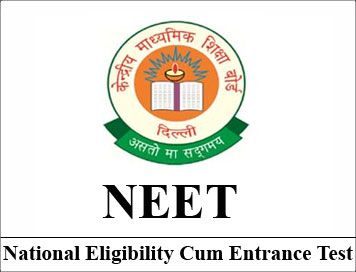
(Eligibility) CBSE: National Eligibility Cum Entrance Test
(NEET)
Indian Nationals and Overseas Citizen of India (OCI) are Eligible for
appearing in the National Eligibility Cum Entrance Test (NEET-UG)
Eligibility for All India Quota Seats
(i) He/She has completed age of 17 years at the time of
admission or will complete the age on or before 31st December of the year of
his/her admission to the 1st year MBBS/BDS Course and is an INDIAN NATIONAL.
(ii) The upper age limit for candidates seeking admission
under 15% All India Quota Seats is 25 years as on 31st December of the year of
the entrance examination. Further provided that this upper age limit shall be
relaxed by a period of 5 (five) years for the candidates of Scheduled Castes/
Scheduled Tribes/Other Backward Classes. Candidate must born on or between
(a) 01.01.84 to 01.01.97 (SC/ST/OBC Category)
(b) 01.01.89 to 01.01.97 (Other Category)
Eligibility for State Quota Seats
(i) He/She has completed age of 17 years at the time of
admission or will complete the age on or before 31st December of the year of
his/her admission to the 1st year MBBS/BDS Course and is an INDIAN NATIONAL.
(ii ) Overseas Citizens of India (OCI) are eligible for admission in
Medical/Dental Colleges subject to rules and regulations framed by the
respective State Governments and the Government of India.
QUALIFYING CRITERIA FOR NATIONAL ELIGIBILITY-CUM-ENTRANCE TEST
(a) In order to be eligible for admission to MBBS/BDS courses
for a particular academic year, it shall be necessary for a candidate to obtain
minimum of marks at 50th percentile in ‘National Eligibility-cum-Entrance Test,
held for the said academic year. However, in respect of candidates belonging to
Scheduled Castes, Scheduled Tribes, Other Backward Classes, the minimum marks
shall be at 40th percentile. In respect of General candidates with locomotory
disability of lower limbs, the minimum marks shall be at 45th percentile. The
percentile shall be determined on the basis of highest marks secured in
All-India common merit list in ‘National Eligibility-cumEntrance Test for
admission to MBBS/BDS courses’